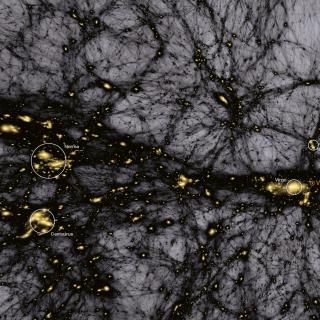Bibcode
Gordon, C.; Cuceu, A.; Chaves-Montero, J.; Font-Ribera, A.; González-Morales, A. X.; Aguilar, J.; Ahlen, S.; Armengaud, E.; Bailey, S.; Bault, A.; Brodzeller, A.; Brooks, D.; Claybaugh, T.; de la Cruz, R.; Dawson, K.; Doel, P.; Forero-Romero, J. E.; Gontcho, S. Gontcho A.; Guy, J.; Herrera-Alcantar, H. K.; Iršič, V.; Karaçaylı, N. G.; Kirkby, D.; Landriau, M.; Le Guillou, L.; Levi, M. E.; de la Macorra, A.; Manera, M.; Martini, P.; Meisner, A.; Miquel, R.; Montero-Camacho, P.; Muñoz-Gutiérrez, A.; Napolitano, L.; Nie, J.; Niz, G.; Palanque-Delabrouille, N.; Percival, W. J.; Pieri, M.; Poppett, C.; Prada, F.; Pérez-Ràfols, I.; Ramírez-Pérez, C.; Ravoux, C.; Rezaie, M.; Ross, A. J.; Rossi, G.; Sanchez, E.; Schlegel, D.; Schubnell, M.; Seo, H.; Sinigaglia, F.; Tan, T.; Tarlé, G.; Walther, M.; Weaver, B. A.; Yèche, C.; Zhou, Z.; Zou, H.
Bibliographical reference
Journal of Cosmology and Astroparticle Physics
Advertised on:
11
2023
Citations
23
Refereed citations
18
Description
We present the first measurements of Lyman-α (Lyα) forest correlations using early data from the Dark Energy Spectroscopic Instrument (DESI). We measure the auto-correlation of Lyα absorption using 88 509 quasars at z > 2, and its cross-correlation with quasars using a further 147 899 tracer quasars at z ≳ 1.77. Then, we fit these correlations using a 13-parameter model based on linear perturbation theory and find that it provides a good description of the data across a broad range of scales. We detect the BAO peak with a signal-to-noise ratio of 3.8σ, and show that our measurements of the auto- and cross-correlations are fully-consistent with previous measurements by the Extended Baryon Oscillation Spectroscopic Survey (eBOSS). Even though we only use here a small fraction of the final DESI dataset, our uncertainties are only a factor of 1.7 larger than those from the final eBOSS measurement. We validate the existing analysis methods of Lyα correlations in preparation for making a robust measurement of the BAO scale with the first year of DESI data.
Related projects

Cosmology with Large Scale Structure Probes
The Cosmic Microwave Background (CMB) contains the statistical information about the early seeds of the structure formation in our Universe. Its natural counterpart in the local universe is the distribution of galaxies that arises as a result of gravitational growth of those primordial and small density fluctuations. The characterization of the
FRANCISCO SHU
KITAURA JOYANES